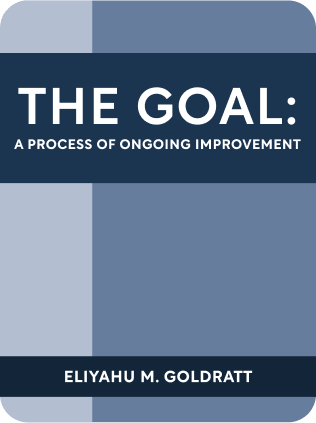

This article is an excerpt from the Shortform book guide to "The Goal: A Process of Ongoing Improvement" by Eliyahu M. Goldratt. Shortform has the world's best summaries and analyses of books you should be reading.
Like this article? Sign up for a free trial here .
Do you need to know how to identify bottlenecks in a process? Why is it important?
Knowing how to identify bottlenecks in a process is a key first step to improving your production output. The Goal focuses on this as a way to increase revenue since it allows you to fulfill more orders.
Keep reading to learn how to identify bottlenecks in a process.
The Massive Cost of the Bottleneck
Any time that the bottleneck isn’t working is lost time forever that cannot be made up at any other part in the system.
An hour lost at the bottleneck causes a loss in total throughput equal to the hourly capacity of that bottleneck. This is an important concept and it’s why you need to know how to identify bottlenecks in a process.
- If the total throughput is a thousand dollars per hour, then the bottleneck is processing at a thousand dollars per hour, even if the literal operational costs or the parts going through it cost much less.
- Alternatively, take the entire operating expense of the factory, divided by the hours worked by the bottleneck – that’s the actual cost of the bottleneck.
In other words, a loss in the bottleneck means a loss to the entire operation, and should be viewed with such gravity. That’s why you need to know how to identify bottlenecks in a process.
Other losses in effective throughput are also similarly costly. For example, feeding low-quality parts through the bottleneck will cause rejection later, leading to effectively lower throughput.
While time lost from the bottleneck can be made up for by hurrying non-bottlenecks, any extra effort here typically adds to operational expense (eg overtime pay). Ideally, the bottleneck is simply maintained at peak capacity at all times.
How to Identify Bottlenecks in a Process
The bottleneck is any resource whose capacity is equal to or less than the demand placed on it. Here are a few methods for how to identify bottlenecks in a process.
Identify the bottleneck by seeing where you have the greatest upstream inventory piling up, and low inventory at the next step. If the non-bottlenecks are producing at equal rates (eg 100 parts/hour), the slowest step will have the largest upstream inventory.
Alternatively, see which downstream steps are most in demand of upstream parts and are idling. If you decrease inventory sizes, you will see which work center, if stopped, halts the whole line.
- Analogy of rocks and water: the water level corresponds to inventory, while rocks are problems disturbing the flow. Lower the water level until a rock sticks out. Solve that problem, then lower the water level further.
Alternatively, in a more brute-force comprehensive way, define your market demand (by sales), then compare the productivity of each step of the chain to this demand.
Exercise: Identify Your Bottleneck
Find the bottleneck that’s decreasing your total throughput. These exercises help you understand how to identify bottlenecks in a process.
- In what step do you have the greatest inventory piling up in front? Where is your largest backlog?
- What you defined above is your bottleneck, and every other step is not a bottleneck. What are other steps you thought were important to optimize, but actually aren’t bottlenecks?
- What is the cost of your bottleneck per hour? Remember, this is the loss in throughput of the entire system per hour.

———End of Preview———
Like what you just read? Read the rest of the world's best book summary and analysis of Eliyahu M. Goldratt's "The Goal: A Process of Ongoing Improvement" at Shortform .
Here's what you'll find in our full The Goal: A Process of Ongoing Improvement summary :
- How to increase your personal output
- How to increase your team's output
- Why obsessing over cost efficiency isn't going to help you with production





